SEO Keywords for Demand Generation - A Content Marketing Playbook
11 minute read | Aug 6, 2022
marketing
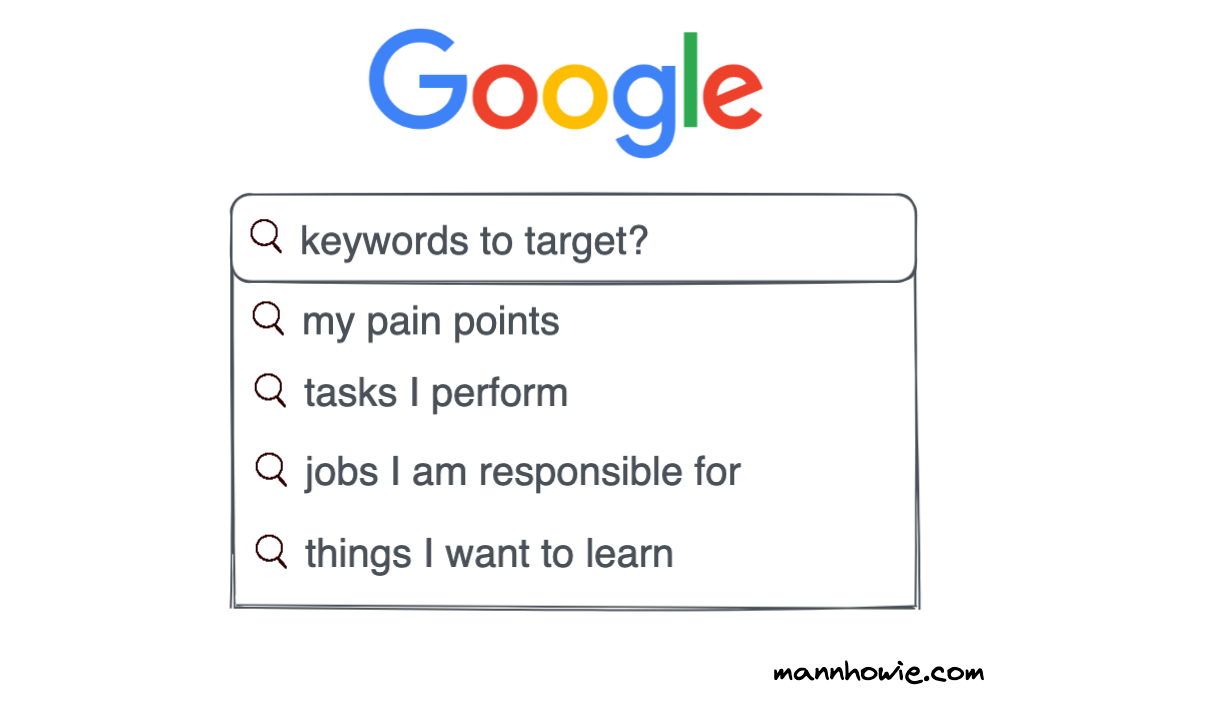 SEO content marketing is a powerful strategy startups can use to capture sales leads and new customers from people researching solutions to their problems.
SEO content marketing is a powerful strategy startups can use to capture sales leads and new customers from people researching solutions to their problems.
The universe of people searching for an answer to a use-case that a product can help solve far exceeds those searching for the features or benefits of the product itself.
However, one of the most difficult parts of finding good SEO content topics to write about is knowing what to write about and where to start. This is where SEO keyword research can assist.
Keyword research is used to find out within the Google search engine what questions people are asking and how many people are asking it on a given monthly basis.
Here are 5 tactics for picking topics that drive demand generation:
- Brainstorm: How to brainstorm use-cases
- Pick Keywords: SEO Keyword Planner tool tips
- Assess Competition: Competitor content assessment framework
- Frame Content: What to write about
- Measure & Track: Topic goal tracking template
Imagine we are a B2B startup with a product that helps customers perform food safety checks in the manufacturing sector.
1. How to brainstorm use-cases
Bad SEO content strategies often focus on highly competitive or low volume search topics related to product features and benefits. Good SEO content strategies focus on the use-cases and struggle of the user leading up to the need to use the product or service.
| 👎 Bad SEO Content Topics | 👍 Good SEO Content Topics |
|---|---|
| The Best Food Safety Software | HACCP Food Safety Hazards |
| How Food Safety Software Saves you Money | GMP Food Safety Audits |
| Food Safety Photo Sharing and Digital Tracking Features | Template Food Safety Logs |
Start by brainstorming a list of specific use-cases and tasks that your customers would use either your product or their existing solution for (e.g. even if it’s paper or spreadsheets). Pull out general keyword ideas.
| Use-case | Keywords |
|---|---|
| Spotting and recording food safety hazards | Food safety hazard, contamination, hazard types, salmonella, thawing, violations |
| Preparing for food safety regulatory audits | HACCP, GMP, CCP, ISO22000 |
| Managing food product recalls | Food recall, food outbreak |
| Food safety prevention | Food safety control measures, food safety program and training |
2. SEO Keyword Planner tool tips
Enter your list of brainstorm use-case keywords in Google Keyword Planner and record the monthly search volume. Keyword Planner is a free tool built by Google to assist marketers with conducting paid google search campaigns. You can get free access to it by signing up for a free Google Ads account.
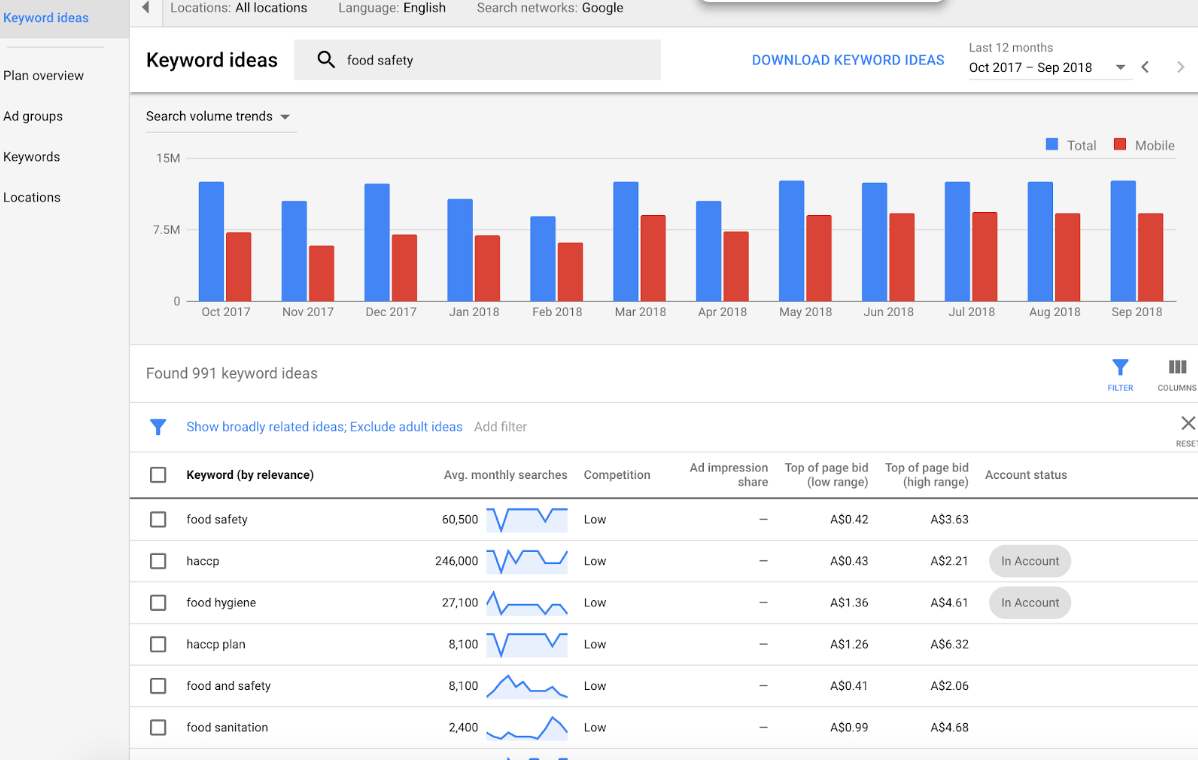
The important properties and metrics include:
- Keyword (by relevance): list of exact keyword searches that broadly match the term you searched including other keyword ideas that Google identified based on people’s search patterns
- Avg. monthly searches: Google’s estimate of the total average monthly searches for that specific term based on the selected location. Very low search volume is likely to yield low results even if your content ranks whilst high search volume is likely to be highly competitive and will be difficult to rank for
- Competition: how competitive a term is in terms of paid search. High competition keywords will likely be dominated by paid search ads at the top of the search results, meaning even if you rank you will likely achieve low click through rates
- Locations: country and region for the search volume. Narrow this down for your core regions where you are targeting potential customers or a specific topic
Google Trends can also be a helpful tool as a leading indicator as to whether a keyword term is trending higher or has recently broken out. In the example below we can see that kinder salmonella has been a breakout term and could be a case study topic for customers to learn about.
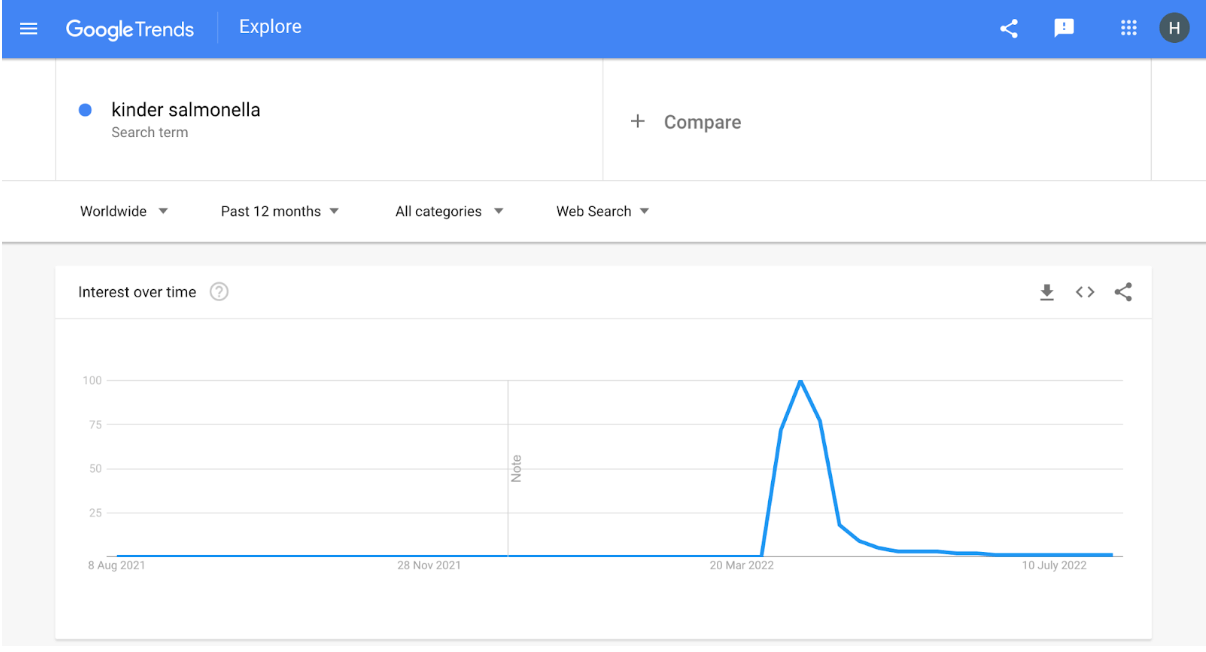
In a spreadsheet, create a list of your keywords including the avg. monthly searches, competition and general trend.
In our food safety example above, we follow the systematic approach and come to the following conclusion: “HACCP Plan” will be the target keyword we should research and write content on:
| Exact Keyword | Avg. Monthly Searches | Comments |
|---|---|---|
| Food safety | 60,500 | 👎 Broad term covering restaurants, at home, manufacturing. Google may only pick 1 or 2 manufacturing specific results for page 1 given how broad the term is |
| Food safety manufacturing | 70 | 👎 Relevant to manufacturing food safety standards but search volume is too low |
| HACCP | 246,000 | 👎 Hazard Analysis and Critical Control Points (HACCP) is certification of a food safety management system that food manufacturers follow. However, it is quite competitive with lots of great regulatory content on it already. Will need to write lots of amazing content to outrank |
| HACCP Plan | 8,100 | 👍 Bingo. The specific plan that is written to implement HACCP certification. Medium competition, not amazing content on a HACCP Plan. |
3. Competitor content assessment framework
Google has one job:
“To match a person’s question being searched for with the best possible answer”
After you have determined the keyword is worth chasing after (e.g. sufficient volume, the right audience and where your product could offer a solution related to that use-case) you will need to evaluate the current ranking content to determine what content you will be competing with.
How to view competitor pages in the relevant region
Google tailors its search results to individual browsing history and specific localised region. You will need to use Google’s free Ad Preview and Diagnosis Tool to preview competitor search results as it would most likely appear to your target customers.
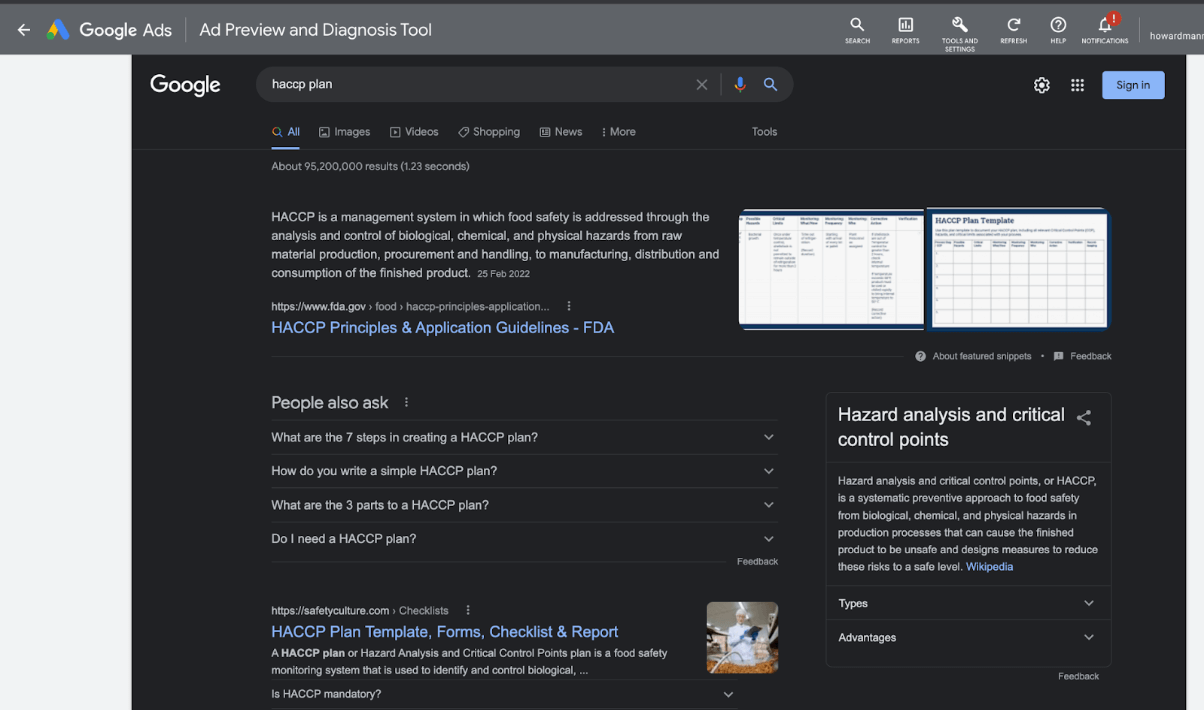
Go through each page and assess for the following:
- Audience: is this audience right for our solution?
- Authority: is the writer a high authority figure on the topic? Regulatory agencies will be more difficult to beat, however not impossible if the content is of low value
- Relevance: is the answer relevant to the question being asked? Is it still timely or has not been updated in a long time?
In assessing the top search result for our keyword example: HACCP Plan
| Category | Competitor Assessment | Good Fit |
|---|---|---|
| Audience | Good fit audience likely food safety officers | 👍 |
| Authority | US FDA ultimate authority hard to beat | 👎 |
| Relevance | Long set of legal regulatory guidelines, difficult for people to digest and understand. | 👍 |
The audience is a good fit with a relevance to our solution but the competing authority is very high. However, given the highly technical nature of the page there exists an opportunity for us to create better content summarising the key aspects of the HACCP Plan that would be more digestible for a non-regulatory audience.
Following the competitor assessment and before framing a topic, ask yourself:
“Can we write a piece of content within the time constraints that would be better than these pages”?
4. What to write about
Frame your content to ask the who, what and why of your customer’s struggle related to the keyword. In our example for the keyword: "HACCP Plan"
| Question | Answer |
|---|---|
| Who is the target audience? | Food safety officers working in food manufacturing |
| What questions would they ask? | How to develop a HACCP Plan |
| Why are they asking this question? | Preparing information and processes to provide to food safety auditor to comply with HACCP |
With the target customer, struggle and intent established we can propose a title and meta and see how it would compare against the first page results (in essence our book cover).
Proposed title and meta for our content:
How to Develop a HACCP Plan - Preparing for Audit What is a HACCP Plan? What information to provide to HACCP auditors? Choosing the right food safety management software to document your records.
This can then be added to the content management plan for further detailed research and content drafting. See my previous article for a detailed guide on how to write SEO content.
5. Topic goal tracking template
After publishing your content (via your web CMS), request for the page to be indexed via Google Search Console (click here to learn how).
Track the content published in a spreadsheet with the following columns:
- Exact Keyword: the name of the main keyword we are targeting (e.g. HACCP Plan)
- Avg. Monthly Searches: from Keyword Planner above (e.g. 8,100)
- Date Published: date article was published and google search index request made
- URL: url of the content page
It will take a few weeks for Google to start gathering search performance data on your newly published page. Use Google Search Console to track the organic performance of your pages by entering the specific URL.
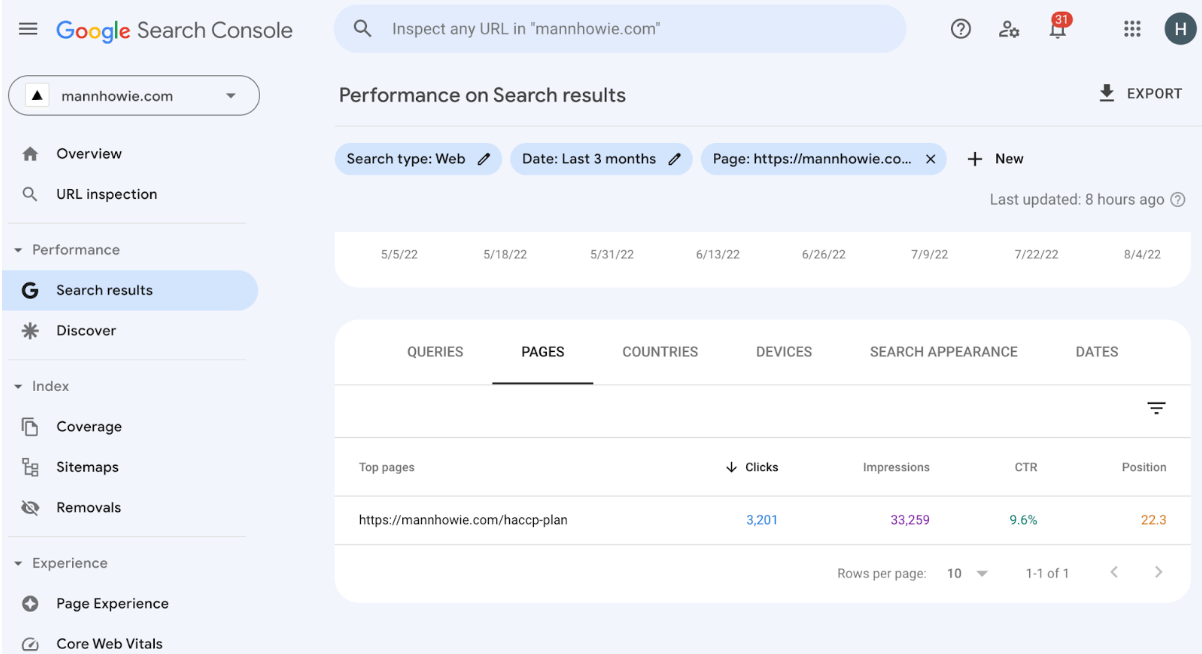
The important properties and metrics to understand are:
- Clicks: organic unique SEO visits to your page during the date range
- Impressions: number of times your page has come up in search query results
- CTR: % Click Through Rate being Clicks / Impressions (i.e. the % of people who clicked on your result upon seeing it on the page against other results)
- Position: the average position ranking of your page across all queries
Track these results in your same spreadsheet and follow the discipline of benchmarking and measuring the results of your content pages against your original keyword targets. Review your results at the end of each quarter to identify whether further content optimisation is needed to improve the relevance of your pages, or optimisation to the title and description may increase your CTR, or whether further content improvement is required to reflect change in competing pages.
How long does it take to rank
Established websites with high quality pages should begin to rank on page 1 globally within a month and achieve top 3 ranking within 3 months. You can expect this to take longer if you have a newer website that has not published much content.
Organic weekly traffic of pages published in December (redacted private data)

Want more tips?
Get future posts with actionable tips in under 5 minutes and a bonus cheat sheet on '10 Biases Everyone Should Know'.
Your email stays private. No ads ever. Unsubscribe anytime.